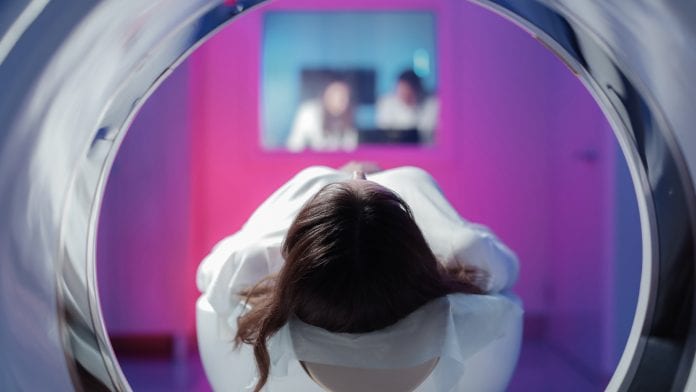
Invasive tissue biopsies for cancer diagnosis could be replaced with ‘virtual biopsies’ in the future thanks to an advanced new computing technique.
The new technique, developed by cancer researchers at the University of Cambridge, uses routine medical scans to allow doctors to take fewer, more accurate tumour biopsies. The development is an advancement towards precision tissue sampling for cancer patients to help select the best treatment.
The research has been published in European Radiology and the method will now be applied in a clinical study.
Visual support
The researchers say that by using computed tomography (CT) together with ultrasound images creates a supportive visual guide for doctors that helps them to ensure the full complexity of a tumour is sampled using fewer targeted biopsies.
This is vital as genetically different tumour cells respond differently to different treatments, and so will help to inform which treatment would be best for the patient. This is particularly important for cancers such as ovarian cancer, as high grade serous ovarian (HGSO) cancer is particularly difficult to detect and is usually at its late-stage by the time it is diagnosed – meaning survival rates have not changed much over the past 20 years.
Tumour heterogeneity
HGSO tumours also tend to have a high level of tumour heterogeneity and patients with more genetically different patches of cancer cells tend to have a poorer response to treatment.
Professor Evis Sala from the Department of Radiology, co-lead CRUK Cambridge Centre Advanced Cancer Imaging Programme, leads a multi-disciplinary team of radiologists, physicists, oncologists, and computational scientists using innovative computing techniques to reveal tumour heterogeneity from standard medical images. For this study, led by Professor Sala, a small group of patients with advanced ovarian cancer were involved who were due to have ultrasound-guided biopsies prior to starting chemotherapy.
The patients initially had a standard-of-care CT scan which the researchers then extracted additional information from using a process called radiomics – high-powered computing methods which identify and map distinct areas and features of the tumour. The tumour map was then superimposed on the ultrasound image of the tumour and the combined image used to guide the biopsy procedure, which the researchers say captured the diversity of cancer cells.
Co-first author Dr Lucian Beer, from the Department of Radiology and CRUK Cambridge Centre Ovarian Cancer Programme, said: “Our study is a step forward to non-invasively unravel tumour heterogeneity by using standard-of-care CT-based radiomic tumour habitats for ultrasound-guided targeted biopsies.”
Professor Sala added: “This study provides an important milestone towards precision tissue sampling. We are truly pushing the boundaries in translating cutting edge research to routine clinical care.”









